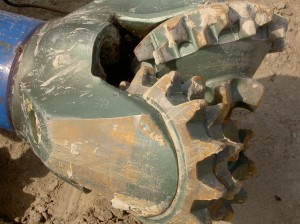Geology, hydrogeology, sensitive site conditions (e.g. proximity to populations or endangered species), and final data quality objectives will all contribute to the assessment and final selection of a drilling method for a project. In general, there are a few basic drilling methods available, each with advantages and disadvantages. Working with Aegis, we can begin assessing the type of drilling method that is suitable for your needs, considering location, subsurface drilling conditions, sampling requirements, data quality objectives, and the final use of the borehole.
Environmental assessments often call for precise sampling of subsurface formations, and the formation waters. As such, drilling methods employing little to no circulating fluids, with precise depth controls and effective depth-specific sampling systems are routinely used. Examples include hollow-stem auger (HSA), air-rotary casing-hammer (ARCH), and dual-tube percussion drilling methods. In some geologic settings involving fractured hard rock aquifers, mud rotary drilling can be employed as well as ARCH and dual-tube percussion.
Water wells in fractured bedrock aquifers, are often drilled with air-rotary hammer drills; whereas in alluvial aquifers, mud rotary systems are the most common. Aegis can help you select a cost-and-time effective drilling method for your project.

